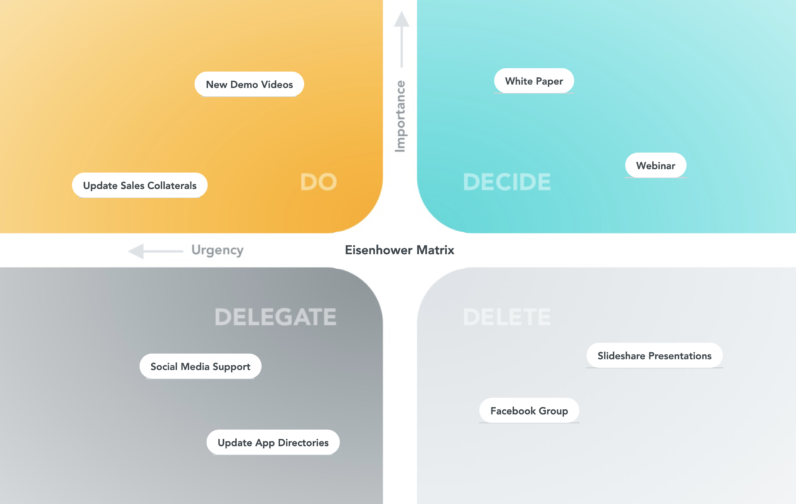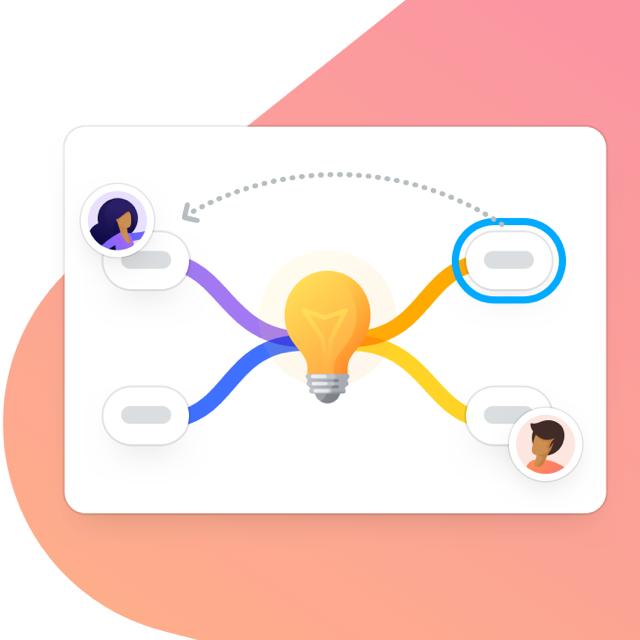We all make dozens if not hundreds of decisions every day: what to wear, where to have lunch, which business opportunity to invest in… The problem is that too many decisions can be draining and lead to decision fatigue or even decision avoidance. At the end of a long day, we’re more likely to make impulse purchases, say no to things we would have otherwise agreed to, or simply select the default option instead of a better but perhaps more difficult one. None of these are good strategies for making important business decisions.

In this article, we’ll introduce you to three simple templates that reduce the mental burden of decision making and thus help you prioritize what’s really important. Each of these templates uses a type of decision matrix that visualizes ideas, tasks or other elements on a two-dimensional canvas. While you could draw such a matrix on a whiteboard or flip chart, using an online diagramming tool such as MindMeister offers a number of benefits that you’d otherwise miss out on. With MindMeister you can:
- Move elements around or remove them easily
- Share the decision matrix with all stakeholders, even remote ones
- Invite colleagues to collaborate with you, to come to a decision together
- Attach additional information to each element, such as images, videos, notes, links or entire files
- Comment and vote on individual elements
The decision matrixes we’re going to discuss below are readily available as templates in MindMeister. Don’t have an account yet? You can sign up for free here.
Effort vs Impact Matrix
The Effort vs Impact Matrix helps you decide which tasks and projects to focus on. Tasks and projects are placed into one of the four quadrants in the grid. As the name suggests, their placement depends on their estimated effort and probable impact.
- Major projects: Place tasks or projects with a high effort and high impact into this quadrant.
- Quick wins: These are tasks/projects that are expected to have a relatively high impact but require very little effort.
- Fill-in jobs: Tasks or projects that don’t require a lot of work but also don’t have a big impact on your business go here.
- Thankless tasks: This includes everything that requires a lot of work yet isn’t expected to have a big impact on your business.
BCG Matrix
The BCG Matrix is also known as the “Growth Market Share Matrix” or “Product Portfolio Matrix”. This tool was designed to help businesses get an overview of their product portfolio and decide which products to invest in and which to discontinue.
The placement of products inside the matrix depends on their relative market share (horizontal axis) and their market growth rate (vertical axis). Products fall into one of four categories:
- Dogs: These are products with low growth or market share. Since they usually generate low or even negative cash returns, dogs are usually not worth investing in.
- Question marks: These are products in high growth markets with low market share. These products require close consideration as they could either turn into stars (and eventually cash cows) or dogs.
- Stars: These are products in high growth markets with high market share. These are the products a company should look to invest in, as they are expected to turn into cash cows and generate a positive cash flow.
- Cash cows: These are products in low growth markets with high market share and the kind of products a company should support and ‘milk’ for cash as much as possible.
Eisenhower Matrix
Developed by Dwight D. Eisenhower, the 34th President of the United States, the Eisenhower Matrix helps you to decide on and prioritize tasks by urgency and importance. The Matrix suggests a different work strategy for each quadrant and the tasks that are placed therein:
- Do: Tasks that are both urgent and important are the ones you should focus on first.
- Decide: These are tasks that are important but not extremely urgent. You can take some time to decide on what to do with them, or simply schedule them for later.
- Delegate: Tasks that are urgent but not important should be delegated to others, so you can focus on the things that really matter.
- Delete: Most of us have a hard time following through on this one, but the truth is that it’s usually best to let go of tasks that are neither urgent nor important.
Next time you need to decide which task, project or product to prioritize, simply select the template that best fits your needs and fill it out, either alone or with your team. The resulting diagram will show you at a glance which items deserve your attention and which ones you can safely ignore or delegate.
Make Better Decisions
Try MindMeister



